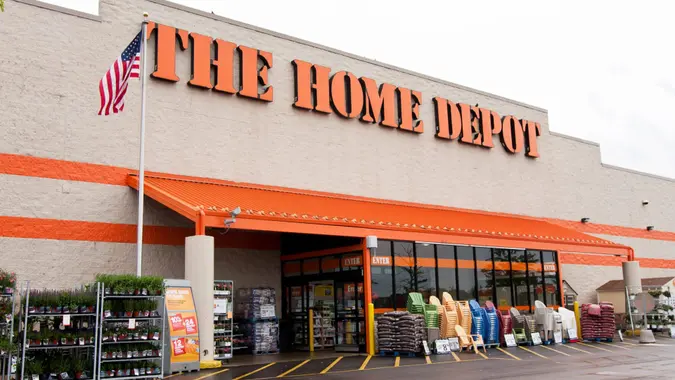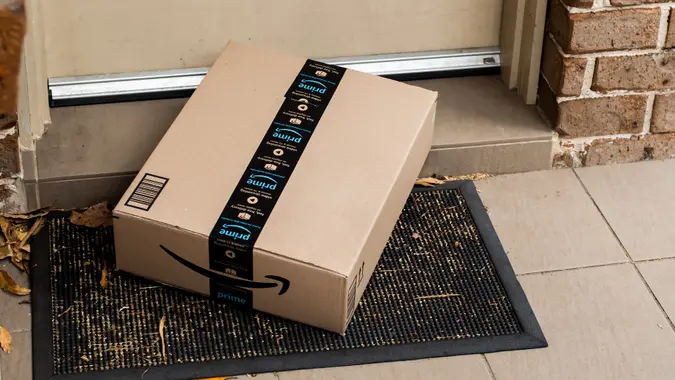Experts Weigh in on Tariffs: 5 Items That Are on the Rise and What’s Still Safe To Buy

Commitment to Our Readers
GOBankingRates' editorial team is committed to bringing you unbiased reviews and information. We use data-driven methodologies to evaluate financial products and services - our reviews and ratings are not influenced by advertisers. You can read more about our editorial guidelines and our products and services review methodology.

20 Years
Helping You Live Richer

Reviewed
by Experts

Trusted by
Millions of Readers
Rising tariffs are quietly driving up prices on everyday goods and many Americans are already feeling the impact.
From furniture and toys to canned food and clothing, certain product categories are seeing noticeable cost increases, while others remain relatively stable.
To help consumers navigate these shifts, financial experts share insights on the five items that are becoming more expensive, which remain stable in price and how shoppers can adjust their budgets to stay ahead.
How Tariffs Lead To Higher Prices
Tariffs may seem like distant political maneuvering, but their effects often show up directly in consumers’ wallets. When companies face higher costs on imported goods, those costs are typically passed along to shoppers in the form of price increases.
Recent data shows that this isn’t just theoretical; it’s already hitting American households.
“Tariffs have raised the overall price level by 1.7% in the short run, translating to an average household income loss of $2,300 (2025 dollars), assuming the Federal Reserve does not offset this with policy changes,” said Garth Hoff, pricing expert at Pricefx.
What’s Already Getting More Expensive
Some everyday items are already seeing noticeable price hikes as a result of tariffs, especially those made with imported materials or manufactured overseas.
Here are several categories experts said consumers can expect to spend more in the coming months.
Electronics and Appliances
Products with heavy plastic or imported parts are especially affected, including computers, smartphones and home appliances.
“Electronics, appliances and anything with heavy plastic components are going to get hit hard,” said Isaac Hetzroni, global sourcing expert.
Synthetic Fabrics
Items made from polyester or other oil-based materials are expected to spike due to energy costs and tariff pressure.
“These are capital-intensive to move out of China, so brands are stuck paying the tariff premium,” Hetzroni said.
Furniture and Home Goods
Large or custom-molded pieces are vulnerable, especially those difficult to manufacture outside of affected countries.
Clothing and Footwear
These categories have seen some of the sharpest price increases — with tariffs driving up short- and long-term costs.
“The tariffs hit clothing and textiles especially hard, with shoe prices up 37% and apparel prices up 35% in the short run,” Hoff said. “Even in the long run, shoes and apparel remain 18% and 17% more expensive, respectively.”
Toys and Plastic Goods
Items made with molded plastic or imported components may face additional hikes as inventories shrink and new shipments are taxed.
What’s Still Safe To Buy
Not all product categories have been hit equally by tariffs. Experts point to the below essential goods and categories that remain relatively stable, at least for now.
Basic Groceries
Items like U.S.-grown grains, dairy, poultry and eggs have remained insulated from tariffs, unless they rely on imported ingredients or packaging.
Eggs
Earlier price spikes were caused by avian flu outbreaks, not tariffs and prices have since dropped significantly.
“As of July 11, 2025, prices had stabilized around $2.70 per dozen, reflecting a dramatic decline from their peak earlier in the year,” Hoff said.
Technology Components
Some high-tech goods may remain affordable due to tariff exemptions on key parts.
“Exemptions have been carved out for semiconductors, which should go a long way toward keeping the price of some high-tech goods down,” said Chris Motola, financial analyst at NationalBusinessCapital.com.
Domestic Brands and Secondhand Items
Products made in the U.S. or purchased secondhand avoid import-related markups and can offer strong value.
What May Be Impacted Soon: Imported Luxuries
While many staples are stable, Motola said there’s one that may not be in the near future. “If you enjoy imported wines and cheeses, there may be dark days ahead,” he said.
How To Shop Smarter During Tariff Season
Consumers don’t have to absorb rising costs without a plan. According to Hoff, shoppers can stay ahead by taking the following steps.
Accelerate Major Purchases
Consumers in the market for vehicles, appliances or electronics may want to make a purchase sooner rather than later. Prices for these big-ticket items are rising rapidly and are likely to continue climbing as pre-tariff inventory runs out.
Stock Up on Essentials
For non-perishables or goods that are likely to be affected, such as imported foods, electronics and school supplies, it can be wise to purchase them in advance of further price hikes.
Be Strategic With Everyday Spending
Look for sales, use coupons, switch to lower-cost alternatives or delay non-essential purchases when possible.
More From GOBankingRates
- 5 Luxurious Winter Clothing Items You Can Find at Costco for Less
- 5 Little Luxuries To Buy at Dollar Tree This December
- 4 Low-Risk Accounts Financially Savvy People Trust for Reliable Returns - And How You Can Use Them
- How Middle-Class Earners Are Quietly Becoming Millionaires -- and How You Can, Too
 Written by
Written by  Edited by
Edited by 
























